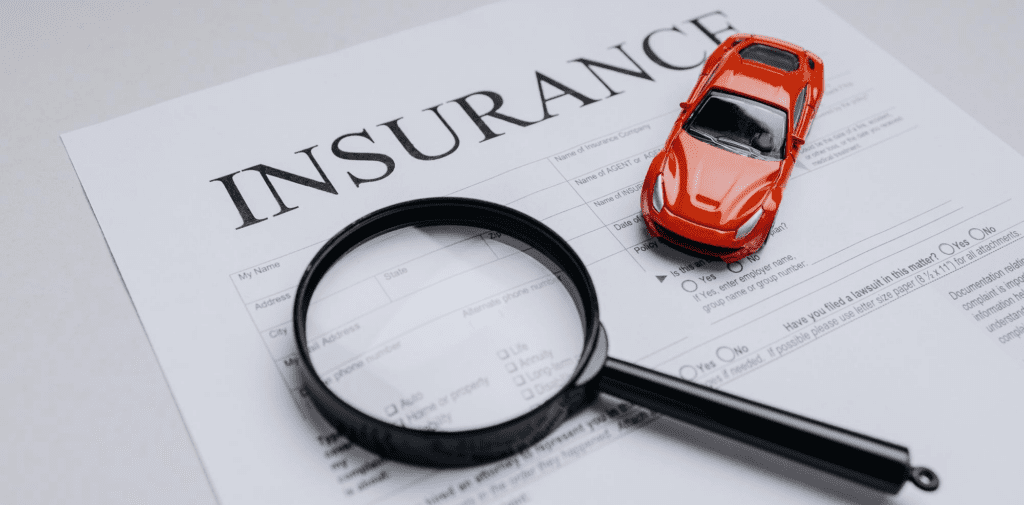Compare cheap car insurance
✔ Compare cheap car insurance quotes
✔ Over 110 insurance providers
✔ Get a quote in minutes
✔ Save up to £504*
Car insurance excess is a fundamental aspect of your car insurance policy, particularly when it comes to making a claim. Understanding this concept can help you avoid financial stress in the event of a car accident.
What is Car Insurance Excess?
Understanding Car Insurance Excess
Car insurance excess is the fixed amount you are required to pay towards a claim on your car insurance policy. This applies regardless of who is at fault in the incident.
The Role of Excess in Insurance Claims
When you make a claim on your car insurance, the excess is the portion of the cost that you must personally cover. It’s a predetermined figure that you agreed to when you took out the policy.
This system is in place to discourage small or frivolous claims and to share the risk between the insurer and the policyholder.
How much can you save on your car insurance?
What’s The Difference between Voluntary and Compulsory Excess?
Compulsory Excess
Compulsory excess is a fixed amount set by your insurance provider. This amount is non-negotiable and must be paid in the event of a claim.
The compulsory excess depends on various factors including your car, age, and driving history. It also varies based on the details of other named drivers on your policy. Another influencing factor is whether you have no-claims protection.
Voluntary Excess
Voluntary excess, on the other hand, is an amount you opt to pay in addition to the compulsory excess. This is a predetermined sum that you agree upon while arranging your insurance policy.
Generally, opting for a higher voluntary excess can result in a lower premium. This allows for some flexibility in managing your insurance costs.
How much can you save on your car insurance?
How Does Excess Work on Car Insurance?
Understanding Excess in Car Insurance
Excess in car insurance refers to the amount you, as the policyholder, are required to pay towards a claim.
It’s a fundamental part of your car insurance policy.
The purpose of excess is to deter people from making small or frivolous claims and to reduce the number of claims that an insurer has to handle.
Types of Excess
There are generally two types of excess: compulsory and voluntary.
Compulsory Excess: This is set by your insurance provider and cannot be altered. It’s the minimum amount you must pay towards any claim. The amount varies depending on factors like your age, driving experience, and the type of car you drive.
Voluntary Excess: This is an additional amount on top of the compulsory excess that you choose to pay. Opting for a higher voluntary excess can lower your insurance premiums, as you’re taking on more of the risk yourself.
How Excess Impacts Claims
When you make a claim, the total excess (compulsory plus voluntary) is the amount you contribute towards the cost of the claim.
For instance, if you have a compulsory excess of £250 and a voluntary excess of £150, and you make a claim for damages of £1,000, you will pay £400 (the total of both excesses). Your insurer will cover the remaining £600.
Choosing the Right Excess
It’s important to find a balance when selecting your voluntary excess. A higher excess can make your premiums more affordable, but it also means you’ll pay more if you need to make a claim.
On the other hand, a lower excess increases your premiums, but reduces your out-of-pocket costs during a claim.
Key Takeaway
Understanding how excess works in car insurance is crucial for making informed decisions about your policy. It affects both your premiums and your financial responsibilities in the event of a claim.
Always consider your personal circumstances and financial situation when selecting the excess amounts for your car insurance policy.
How much can you save on your car insurance?
How Much Is Car Insurance Excess?
Understanding Car Insurance Excess Amounts
The excess amount in car insurance is a crucial component that directly affects your potential financial contribution in the event of a claim.
This amount varies and is clearly detailed during the insurance quoting process, as well as in your final policy documents.


Finding the Excess Amount
When obtaining a car insurance quote, the excess amount is usually one of the first details provided. Insurance companies are obligated to make this information transparent, ensuring you fully understand your financial responsibilities in the event of a claim. This amount is reiterated in your policy documents for clarity and future reference.
Components of Excess
Excess in car insurance typically comprises two parts: compulsory and voluntary. The compulsory excess is non-negotiable and set by the insurer, based on factors like your age, driving history, and the type of vehicle. The voluntary excess is an additional amount you can opt to pay, influencing your premium costs.
Adjusting Your Excess
Before finalising your insurance policy, you have the opportunity to review and adjust the voluntary excess. Selecting a higher voluntary excess can reduce your insurance premiums, but it means paying more in the event of a claim.
Conversely, a lower voluntary excess results in higher premiums but reduces your out-of-pocket costs if you need to claim.
Choosing the Right Insurance Provider
If the excess amounts proposed by an insurer do not align with your financial comfort, it’s advisable to shop around and compare offers from different insurance providers.
Loyalty to a single insurer often doesn’t result in financial benefits, so it’s wise to look for a policy that offers a balance of affordable premiums and excess amounts that suit your budget.
Remember: Flexibility Is Key
Keep in mind that insurance policies are numerous and varied, offering different levels of cover and excess requirements.
The key is to find a policy that not only provides the necessary cover but also fits within your financial capacity, both in terms of premium and excess payments.
Key Takeaway
The excess amount in car insurance is a significant factor in your policy choice. It’s essential to understand these amounts, how they are determined, and how they impact both your premiums and potential claims.
Always review and compare different insurance offers to find the best fit for your financial situation and cover needs.
How much can you save on your car insurance?
Can I Change My Compulsory and Voluntary Excess?
Understanding Compulsory Excess
The compulsory excess is a fixed amount determined by your insurance provider and is non-negotiable. This amount is set based on various factors, including your age, driving experience, and the type of car you drive.


The rationale behind this is to assess the level of risk you pose as a driver. For instance, younger drivers or those with high-performance vehicles might have a higher compulsory excess due to the increased risk associated with these factors.
The Role of Voluntary Excess
On the other hand, voluntary excess is a more flexible component of your car insurance policy. This is an additional amount you choose to pay on top of the compulsory excess in the event of a claim.
The main advantage of opting for a higher voluntary excess is the potential reduction in your insurance premiums. However, it’s important to consider that a higher voluntary excess means you’ll pay more out-of-pocket when making a claim.
Modifying Your Voluntary Excess
If you wish to change your voluntary excess, this can usually be done at any point during your policy term. To do this, you will need to contact your insurance provider directly.
They can adjust your voluntary excess and inform you of any changes this may have on your premiums. Keep in mind that increasing your voluntary excess can lower your premiums, while decreasing it may result in higher premiums.
Weighing Your Options
When considering adjustments to your voluntary excess, it’s essential to strike a balance between affordable premium payments and manageable excess in the case of a claim.
Assess your financial situation and risk tolerance before making a decision. Remember, a higher voluntary excess can significantly impact your financial responsibility in the event of a claim.
Key Takeaway
While you cannot change your compulsory excess, you have the flexibility to adjust your voluntary excess as per your financial comfort and risk preference.
This adjustment can be a strategic way to manage your insurance costs, but it requires careful consideration of your financial capacity to handle potential claims.
Always communicate with your insurance provider to understand the implications of any changes to your policy.
How much can you save on your car insurance?
Types of Additional Excess in Car Insurance Policies
Young Driver Excess
Young drivers often face an extra compulsory excess known as the ‘young driver excess.’ This is typically imposed on drivers under the age of 25. Insurance providers view younger drivers as higher risk, primarily due to their relative inexperience on the road.


As a result, if a young driver makes a claim, they might need to pay this additional excess over and above any standard excess.
High-Performance Car Excess
Owners of luxury or high-performance cars are also subject to an additional excess. These vehicles, including sports cars with high speed capacities, are more attractive to thieves and generally more costly to repair.
Their heightened performance capabilities also increase the risk of accidents, leading insurers to impose a higher excess as a precaution.
Windscreen and Glass Excess
Most car insurance policies include a windscreen/glass excess. This excess applies when you make a claim for windscreen damage. If the windscreen requires replacement, a small excess is usually charged.
However, if the windscreen can be repaired instead of replaced, many policies waive this excess. It’s important to check your policy details, as terms can vary between different insurers.
Excess for Non-Approved Repairs
When your car needs repairs, it’s crucial to check your insurance policy for approved repairers. Opting for a mechanic or garage that isn’t approved by your insurance provider could lead to an additional excess.
This is because insurers often have agreements with certain repairers to control costs, and using non-approved services could result in higher expenses for the insurer.
Key Takeaway
Understanding these various types of additional excesses can help you make informed decisions about your insurance policy and potential out-of-pocket expenses in the event of a claim. Always refer to your policy documents for specific details and conditions.
How much can you save on your car insurance?
What is Excess Protection Insurance?
Excess protection insurance is designed to cover the cost of your excess in the event of an insurance claim.
For instance, if you’re involved in a car accident and have a £250 excess on your claim, this type of insurance enables you to recover that £250. It acts as a financial safeguard, ensuring that you are not out of pocket due to the excess payment.


How to Get Excess Protection Insurance
You can acquire excess protection insurance either as a standalone policy or as an add-on to your existing car insurance policy. When setting up this insurance, it’s important to establish an upper limit for cover.
This limit should ideally match the amount of your policy’s excess. By aligning these figures, you ensure that the insurance fully covers your excess in case of a claim.
Claim Limitations and Restrictions
The frequency and amount you can claim on your excess insurance depend on the specific terms of your policy. Some insurers may impose a limit on the number of claims you can make within a certain period, while others might cap the total amount you can claim.
It’s crucial to understand these limitations before purchasing a policy to ensure it meets your needs.
Cost-Benefit Analysis
While excess insurance can potentially save you money, especially if you need to make a claim, it’s important to carefully read the policy terms. Understanding the cover details and the associated costs is essential.
This includes being aware of any exclusions, limitations, and the overall expense of the insurance. A thorough review helps you assess whether the policy offers value for money and suits your individual circumstances.
Key Takeaway
Excess protection insurance offers an additional layer of financial security in the event of a claim. However, it’s imperative to consider the policy’s specifics, including claim limitations and costs, to ensure it aligns with your requirements and provides the intended benefits.
How much can you save on your car insurance?
Should I Take Out Excess Protection Insurance?
Assessing Your Financial Situation
The decision to take out excess protection insurance largely hinges on your individual financial circumstances. Ideally, when you choose an insurance policy, the excess amount should be within your financial means, negating the need for additional excess insurance.


However, if paying the compulsory excess would stretch your finances, excess protection insurance might offer a much-needed financial buffer.
Weighing Costs Against Risks
It’s important to remember that you are only required to pay the excess in the event of making a claim. In contrast, the premium for excess protection insurance is a definite cost, payable regardless of whether you make a claim.
This brings about a crucial consideration: assessing the likelihood of making a claim against the certainty of paying for excess insurance.
Alternative Financial Strategies
An alternative strategy to excess protection insurance is setting aside funds in a savings account specifically for potential excess payments.
This approach has the advantage of building a financial reserve that can be used not just for excess payments, but for other emergencies as well.
Moreover, if you don’t end up making a claim, the saved money remains yours, potentially accruing interest over time.
Key Takeaway
Ultimately, the decision to opt for excess protection insurance should be based on a careful evaluation of your financial capability to handle the excess, the probability of making a claim, and your comfort with alternative saving strategies.
It’s a balance between immediate cost (insurance premium) and potential future benefit (cover of excess in case of a claim).
How much can you save on your car insurance?
When Do You Pay Excess on Car Insurance?
Paying an excess on car insurance can often be a source of confusion. Essentially, the excess is the amount you contribute towards a claim. Here’s a more detailed look at when and how this excess applies in various scenarios.


Do I Have to Pay the Excess Immediately?
The timing of when you pay the excess can vary. Generally, you might be asked to pay it immediately when you start your claim. In other instances, particularly with repairs, the excess may be deducted from the total repair bill.
In such cases, you would pay the excess at the end of the claims process. This varies based on the insurance provider, the type of claim, and the specific terms of your policy.
It’s important to note that if the cost of repairs is less than your excess amount, your car insurance policy won’t cover the claim. In this scenario, you would need to handle the entire expense out of pocket.
What If the Accident Wasn’t My Fault?
This is a common query. Even if you’re not at fault for an accident, you will still need to pay the excess. The idea is that the at-fault driver’s insurance should refund you the excess amount.
However, be prepared for potential delays. This process can be time-consuming, and you might have to actively claim the excess back from the other driver’s insurance company.
Adding legal protection to your insurance policy can be beneficial in such situations. It can assist you in recovering the excess from the at-fault party’s insurer.
What If the Other Driver Is Uninsured?
In the unfortunate event that the other driver is either unidentified or uninsured, you may still be required to pay the excess, irrespective of who was at fault in the accident.
However, if your policy includes a comprehensive cover with an uninsured driver promise, there’s a silver lining. Such policies not only reimburse your excess but also ensure that your no-claims discount remains intact.
This feature of comprehensive policies offers significant protection against the financial implications of accidents involving uninsured drivers.
How much can you save on your car insurance?
How Can I Compare Car Insurance Excess?
Comparing car insurance excess amounts is a key step in selecting the right policy. When you’re evaluating different car insurance quotes, it’s crucial to pay attention to the policies’ excess amounts. This figure can significantly affect your overall costs in the event of a claim.
Starting Your Comparison
Beginning the process of comparison might seem daunting, but it doesn’t have to be. If you’re unsure where to start, there are services available that can simplify this task for you. These services will independently compare various insurance providers, taking the burden off your shoulders.
They focus on finding the most suitable car insurance deal that aligns with your specific requirements. This involves showing you policies based on a range of factors such as price, cover options, additional benefits (add-ons), and payment terms.
By using such a comparison service, you can easily assess which policies offer the best balance of cost and benefits for you, especially in terms of the excess amount. This way, you can choose a policy that not only fits your budget but also provides adequate cover for your needs.
How much can you save on your car insurance?
Frequently asked questions
Car insurance excess exists to discourage individuals from submitting numerous low-value claims for minor damages. Essentially, car insurance is designed for more significant claims, those that might be too costly for you to handle on your own.
Additionally, having an excess is a method used by insurance providers to safeguard against fraudulent claims and false claims. When claimants are required to pay a portion of the costs themselves, it increases the likelihood that their claims are genuine.
In the event that you make a claim, your insurance provider may perceive you as a higher risk. This could lead to an increase in your compulsory excess when you come to renew your policy.
Increasing your voluntary excess might be a good choice if you see yourself as a safe driver. A higher voluntary excess can lead to lower premiums.
However, it’s crucial to ensure that you can afford to pay both the voluntary and compulsory excess in case you need to make a claim. Setting a high voluntary excess that is challenging to pay defeats its purpose.
Should you find yourself unable to pay the excess, there’s a risk that your insurance provider may refuse to pay out on a claim.
This underscores the importance of always checking the excess amount carefully before committing to any insurance policy.
You will not be required to pay an excess if the claim is made against you by someone else, or if your cover is solely third-party car insurance. This is due to the fact that the excess is applicable only to the repairs of your own vehicle.










